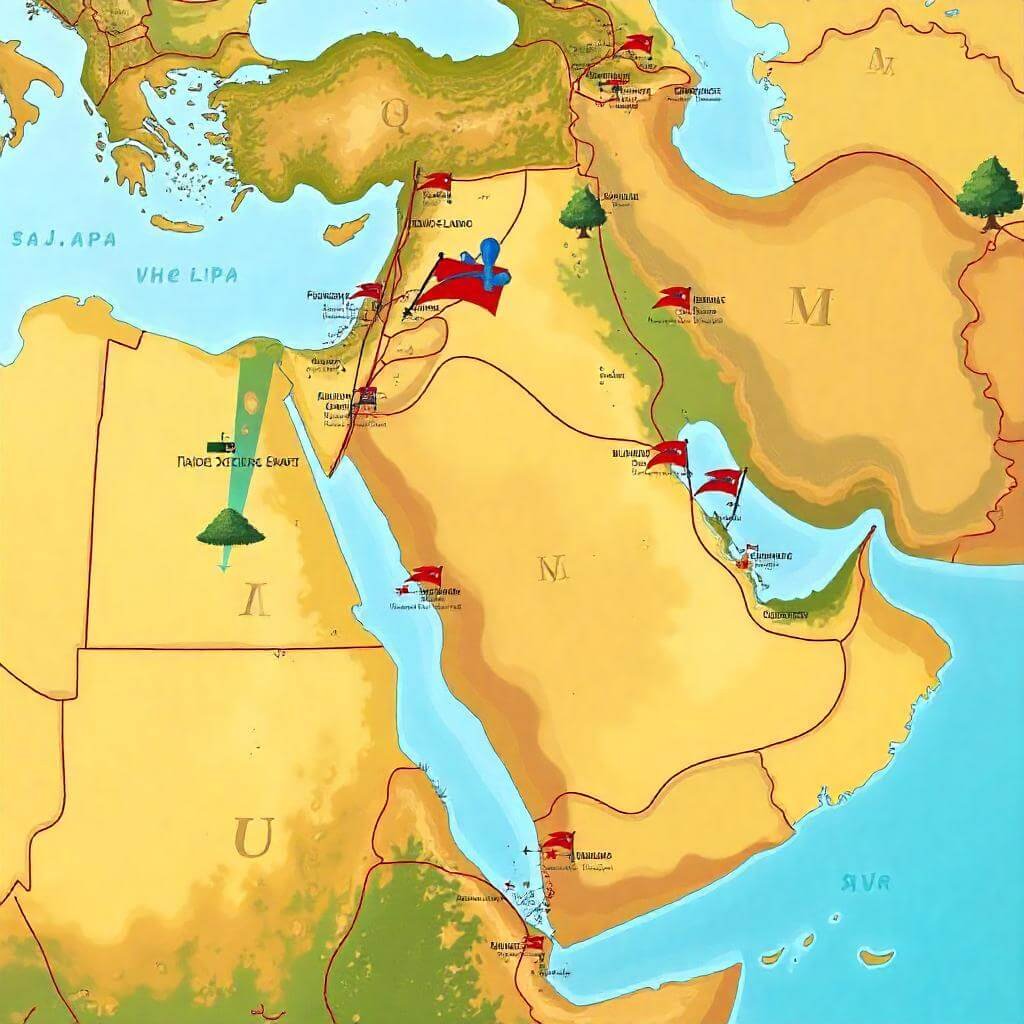In 2025, Middle East policy remains a complex and evolving landscape, shaped by geopolitical tensions, economic shifts, and social dynamics. As global powers, regional actors, and local populations navigate this intricate region, the challenges and controversies surrounding Middle East policy are more pronounced than ever. From energy transitions to diplomatic realignments, this blog explores the key issues defining the region’s future, offering insights for policymakers, analysts, and curious readers alike.
Why Middle East Policy Matters in 2025
The Middle East continues to be a focal point for global attention due to its strategic importance. Middle East policy in 2025 is driven by several critical factors:
- Energy Dynamics: The region’s role in global oil and gas markets is shifting as countries like Saudi Arabia and the UAE invest in renewable energy (IEA Energy Outlook 2024).
- Geopolitical Rivalries: Tensions between the U.S., China, and Russia influence regional alliances, with countries like Turkey and Iran asserting greater autonomy.
- Social Movements: Youth-led demands for reform, particularly in nations like Iraq and Lebanon, challenge traditional governance structures.
Understanding these dynamics is essential for grasping the controversies shaping Middle East policy today.

Key Challenges in Middle East Policy
Energy Transition and Economic Diversification
As global demand for sustainable energy grows, Middle Eastern nations face pressure to diversify their economies. Saudi Arabia’s Vision 2030, for example, aims to reduce oil dependency by investing in tech and tourism (Saudi Vision 2030). However, challenges persist:
- Infrastructure Gaps: Transitioning to renewables requires massive investment in technology and skills.
- Economic Risks: Over-reliance on oil revenues leaves countries vulnerable to market fluctuations.
- Social Impact: Rapid diversification may exacerbate unemployment among youth, who make up over 30% of the region’s population (World Bank, 2024).
Regional Conflicts and Diplomacy
Ongoing conflicts, such as the Yemen crisis and Syria’s reconstruction, complicate Middle East policy in 2025. Diplomatic efforts, like the Abraham Accords, have fostered new ties, but controversies remain:
- Iran’s Role: Tehran’s nuclear ambitions and proxy conflicts fuel tensions with Israel and Gulf states (Council on Foreign Relations, 2024).
- U.S. Involvement: America’s reduced military presence has prompted regional powers to seek new partners, including China.
- Humanitarian Crises: Over 15 million displaced people in the region demand urgent attention (UNHCR, 2024).

Social and Political Reforms
The push for reform is a double-edged sword in Middle East policy. While countries like Jordan and Morocco have made strides in governance, others face resistance:
- Youth Empowerment: Young people demand jobs and political inclusion, as seen in Iraq’s 2024 protests.
- Gender Equality: Women’s rights are advancing in Saudi Arabia, but cultural barriers persist across the region.
- Authoritarian Pushback: Regimes in some nations suppress dissent, risking long-term instability.
Controversies Shaping Middle East Policy
Foreign Intervention vs. Regional Autonomy
Foreign powers have long influenced Middle East policy, but 2025 marks a shift toward regional self-reliance. The U.S.’s pivot to Asia and China’s Belt and Road Initiative (Brookings, 2024) raise questions about sovereignty. Critics argue that external investments often prioritize strategic gains over local needs.
Climate Change and Resource Scarcity
The Middle East faces severe climate challenges, with temperatures rising faster than the global average (IPCC, 2024). Water scarcity and desertification threaten agriculture and urban centers, sparking debates over resource allocation and international aid.

Actionable Takeaways for Understanding Middle East Policy
To navigate the complexities of Middle East policy in 2025, consider these steps:
- Stay Informed: Follow reputable sources like Al Jazeera and the Middle East Institute for balanced perspectives.
- Engage with Data: Use reports from the World Bank and UNHCR to understand economic and humanitarian trends.
- Support Diplomacy: Advocate for inclusive dialogues that amplify local voices over foreign agendas.
- Monitor Climate Initiatives: Track regional efforts like the UAE’s Masdar project for insights into sustainable development.
Conclusion
Middle East policy in 2025 is a tapestry of challenges and opportunities. From energy transitions to diplomatic breakthroughs, the region is at a crossroads. By understanding the key issues—economic diversification, regional conflicts, and social reforms—readers can better appreciate the controversies shaping the Middle East’s future. Stay engaged, informed, and open to the region’s evolving narrative.

